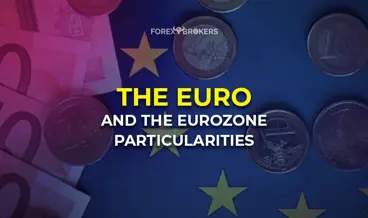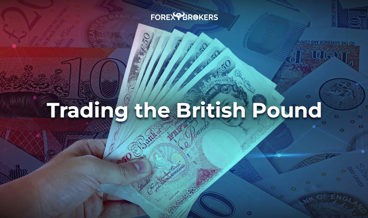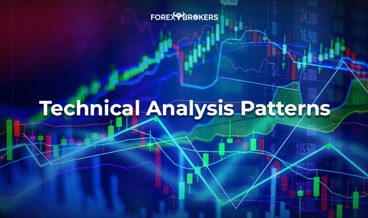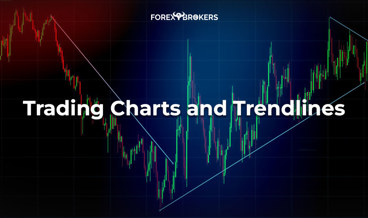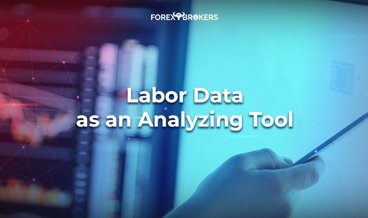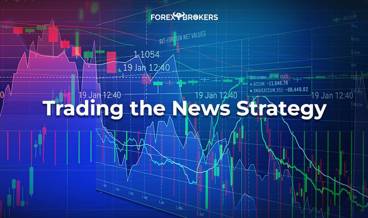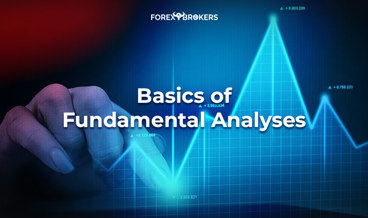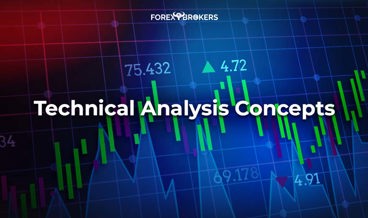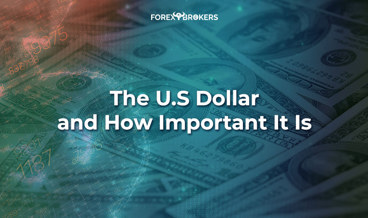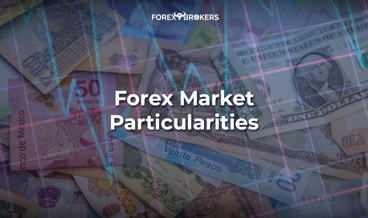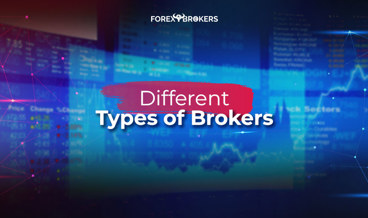Ravaged by wars in the last centuries, European nations decided future generations should no longer suffer from such pain. The European Union was born on the desire to bring together a unified Europe, aiming for the same direction – peace and prosperity for its citizens.
In a way, it came as a necessity. Rising China meant a new, formidable economic powerhouse emerged on the Eastside. Russia and the United States economies were big enough to offer their governments a competitive advantage on any negotiation table with European countries.
Europe understood that only united it can provide a better future for its citizens. And so, the European Union, a single market with over half a billion of educated and sophisticated consumers, was born.
Suddenly, everyone wants to have access to the single market. As an outsider, it is one thing to sell your products to one country (say, Italy), and another thing to access a five-hundred million people market.
Nowadays, the European Union counts twenty-eight member states, including the United Kingdom, which decided to leave the group in a 2016 referendum. It hasn’t done that at the time of this article, so we must consider it in any future references.
Europe, therefore, became stronger and united. Slowly but surely, a European Parliament appeared, a European Court of Justice, and a European Commission, only to give some examples of prominent European institutions. On top of it, a European Central Bank and a common currency both acting as a pillar for the Eurozone.
Borders disappeared. As a member of the European Union, freedom of movement is a right and privilege. Commerce between nations flourished as a lack of borders cut expensive, unnecessary costs.
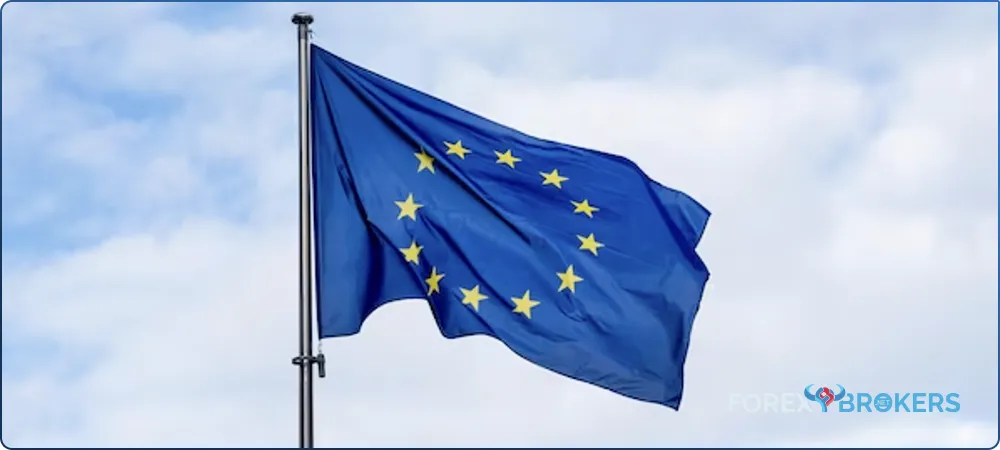
Euro and the Eurozone
From improved air quality to freedom of movement and the right to work in any European Union country, European citizens saw day by day how their lives improved. But it wasn’t an easy road. Euro and the Eurozone had an existential crisis.
One thing to have in mind all the time is that the Eurozone and the European Union are two different things. The Eurozone, also called the euro area, is a monetary union of nineteen countries part of the European Union. It shares a common currency, the Euro, born in 1999.
How Euro Came to Existence
This trading academy covered during this section the history of money and the Bretton Woods conference. As a quick reminder, under the gold standard, national currencies were backed by gold. Effectively, a country could print money only if its gold reserve warranted.
After 1970, most nations abandoned the Bretton Woods system. A so-called Smithsonian Agreement meant a new, flexible exchange rate system was born.
The European Economic Community decided on the implementation of a European Exchange Rate Mechanism (ERM). Also called “the snake,” it didn’t last long. The famous George Soros trade against the Bank of England in 1992 forced the United Kingdom out of the ERM only two years after it joined it.
Then, in 1999, the Euro came into existence as most European countries decided in favor of a monetary union – with two exceptions: Switzerland and the United Kingdom.
In a monetary union, the countries give up their right to conduct monetary policy. This is a difficult thing to do for a country, as most feel like giving up sovereignty. Price and nationalism often overlook good economic concepts.
In times of economic difficulties (there’s always a recession around the corner, as the business cycle points), countries can easily print more money. They “print” their way out of a recession. This is to the detriment of their citizens. It builds longer-term debt, sacrificing future generations.
Yet, it is a tool in the hands of the current political class, and many nations prefer access to it. Therefore, it is no wonder that some didn’t want to join the Euro and the Eurozone despite being full European Union members. Eurozone members are represented at the ECB and jointly determine the monetary policy.
European Central Bank (ECB)
The ECB is one of the most influential central banks in the world. And, we might add, one of the most innovative.
It isn’t easy to set the monetary policy on such different economies. Strength in one part (Germany, Netherlands) and weakness in other (Greece, Italy, Spain) led to a crisis that almost destroyed the Euro and the Eurozone.

But one institution stood above all. The ECB, acting under the Bank for International Settlements (BIS) umbrella, managed to hold the Euro and the Eurozone together when no one thought it possible.
The national central banks still exist in all the Eurozone countries. However, they act more as federal banks do in the United States. Namely, national banks in the Eurozone area make sure the ECB monetary policy is implemented according to the strategy. On top of that, they are the ECB’s eye in the region, conducting research beneficial to the ECB staff for future economic projections.
The ECB meets every six weeks. It used to meet monthly, but that changed a few years ago. Unlike the Bank of England, which doesn’t hold a press conference unless it changes the bank rate, the ECB holds a press conference after every meeting.
First, the President reads the Governing Council (GC) statement. Next, it stands ready for questions and answers from the press representatives. The Euro experiences high volatility especially during the questions and answers session.
The ECB’s mandate focuses on price stability. As it is the case with other central banks too, it targets an inflation rate below but close to the two percent level.
Eurozone Particularities
Euro, the Eurozone, and the European Union are three different concepts challenging to grasp for many traders outside of Europe. As mentioned earlier, not all Eurozone members are members of the European Union. Moreover, some European countries adopted the Euro (e.g., Montenegro, Kosovo), but aren’t part of the Eurozone.
Furthermore, some other countries are obliged to adopt the Euro in the future, but only once they meet the criteria to do so. Finally, some small states (e.g., Vatican, Monaco, Andorra, San Marino) use the Euro as their official currency but also issue their own coins. A total mess! But it makes sense to be so complicated, as European nations each have their own strong identity.
Initially, there were eleven members of the Eurozone. They adopted the Euro in 1999, and the first enlargement took place in 2001 when Greece joined the Eurozone.

Later, seven other countries adopted the Euro (Slovenia, Malta, Slovakia, Cyprus, Estonia, Lithuania and Latvia). Other countries have yet to join the Eurozone (Bulgaria, Romania, Hungary, the Czech Republic, and Poland), but only when they meet the conditions. Some are very close to the integration process, some not so, and some hesitate to adopt the common currency.
Euro Particularities
In 1999, eleven countries adopted the Euro: Belgium, Luxembourg, Spain, France, Germany, Ireland, Italy, Netherlands, Austria, Portugal, and Finland. Their currencies were converted using various ratios, and the basket’s value became the value of the Euro.
As such, the Euro replaced many currencies on the Forex dashboard. National currencies like the Deutsche Mark, the French Franc and the Italian Lira disappeared. It wasn’t possible anymore to trade the Deutsche Mark against the US Dollar, but only the Euro against the USD.
Viewed by many as a project doomed to failure, the Euro survived for two decades. Despite the enormous complexity of the European project, the European Union and the Eurozone now account for about seventeen percent of the world’s Gross Domestic Product (GDP).
No doubt, the road ahead is a bouncy one. However, each year, European leaders gain more experience and each year brings more and more trust in the European institutions. The Euro, as a common currency, has traveled a bumpy road but seems stubborn to keep going despite numerous challenges.
Nowadays, the Euro pairs are one of the most traded currency pairs part of the currency dashboard. The EURUSD is the most liquid and favored by all retail traders, regardless of their trading strategy.
The Euro reacts to economic news out of the Eurozone but also at economic data out of some member countries. For instance, Germany and France are the two pillars of the Eurozone and the Euro were built. When the economic data of the two countries differ from the forecast, the Euro fluctuates against other currencies.
Economic Data to Consider When Trading the Euro
As the third-largest economy in the world (following the United States and China), the Eurozone economic output evolution is closely watched by traders around the globe. Data related to unemployment or inflation means huge gyrations for the Euro and the potential to benefit and speculate from such moves
During the 2008 financial crisis and after, the Eurozone was one of the most affected regions in the world.
Even though the financial crisis started in the United States housing sector, it also strongly influenced the global financial system and other economies.
It showed, once again, how vulnerable economies from other parts of the world are to a financial crisis and how interconnected the global financial system is.
In the Eurozone, the economic data to watch is slightly different than in the United States, the United Kingdom or other parts of the world. Yes, the classic pieces of the economic puzzle are there (e.g., inflation, unemployment rate, etc.), but some other releases are as important for the Eurozone. We’ll start with the classic ones and then move into the unusual ones.
Purchasing Managers Index (PMI)
A standard economic indicator to measure the performance of various economic sectors, the PMIs have the power to move the Euro pairs. Only two releases come out in the Eurozone: PMI Manufacturing and PMI Services, but in a slightly different way than when compared with other economies.
The usual interpretation against the fifty level is valid here, too: values bigger than fifty show an expanding sector (bullish for the currency), while values below the fifty level show a contracting sector (bearish for the currency). The further from the 50, the more acute the currency market moves.
Eurozone PMI Manufacturing
The first one to come out always is PMI Manufacturing. Every first business day after the month ends, the European trading session begins with the PMI Manufacturing data.
Before the data for the Eurozone, Spanish, Italian, French and German PMI Manufacturing data is released. During an hour, traders know how the manufacturing sector in the major Eurozone economies performed.
Surprises on the German and French sides lead to strong reactions from the Euro pairs. At the top of the hour, the PMI Manufacturing for the entire Eurozone shows the overall situation. However, most of the time, the market has already made its moves when the French and German data come out.
Many traders tend to underestimate the importance of these PMIs. While they are nothing but surveys, they go so deep into forecasting the conditions for the next six months that they offer a picture very close to reality. Over three thousand businesses in the Eurozone respond to such surveys, rating the level of business conditions like employment, inventories, confidence and so on.
Eurozone PMI Services
Mimicking the PMI Manufacturing releases, the ones referring to the services sector follow a similar pattern on the release day. On the third business day after the month ends, the PMI Services is released in the course of an hour – Spanish, Italian, French, German, and then the Final PMI Services at the top of the hour, right at the start of the London session.
As always, when it comes to developed countries, the services sector’s data is more relevant for the overall economy than manufacturing. Hence, look for the Euro to react most to the PMI Services release rather than to the PMI Manufacturing one.
Eurozone Retail Sales
Released by Eurostat about thirty-five days after the month ends, Eurozone Retail Sales offer an idea about the health of the consumer. However, it is by no means very relevant to the Euro because Germany and France have their consumer spending data released earlier. If you think of the fact that together, the two make about half of the Eurozone’s economy, then the muted reaction is normal.
German Factory Orders
As a leading indicator of production, the factory orders show the level of the new purchasing orders placed with manufacturing. Germany sits at the core of the Eurozone as its largest economy. A decline in Germany Factory Orders beyond the forecast spells trouble for the other European countries, too. Hence, the Euro will be the first one affected, trading lower on the news.
Gross Domestic Product (GDP)
The GDP is a way to compare economies under the same metrics. Different versions exist, from GDP per capita to real or nominal GDP, and so on.
In the Eurozone, three versions of GDP are released twenty days apart from one another – Preliminary Flash, Flash and Revised. This is quarterly data; in the last several years, no quarter has seen a growth larger than 1%. The last time the Revised GDP in the Eurozone reached the 1% level quarterly was September 2010.
German Trade Balance
About forty days after the month ends, the German Trade Balance shows the performance of the German economy when it comes to its exports. An economic principle states that if a country can export more than it imports, that’s positive for economic growth.
However, it depends a lot on what you’re doing with the surplus. Saving it is not a way to move forward, especially if the economy faces headwinds. Let’s insist a bit on this topic as it recently created a robust debate in the Eurozone.
With so many countries with different cultures and economies, the Eurozone experiences areas with trade balance surplus or deficit. When exports exceed imports, that’s a surplus. On the other hand, when exports are less than the imports, that’s a deficit. Countries like Germany or the Netherlands have large surpluses, while Greece or Spain deal with a deficit.
The ECB has long argued that monetary policy without fiscal policy only solves the Eurozone problems temporarily. The hint was that the countries with large surplus should start spending it on new infrastructure projects (schools, roads, bridges, etc.), creating jobs and helping economic growth in times when monetary policy fails or lags.
For instance, at the time this article is written, the ECB keeps its main refinancing rate or the refi rate at -0.5%. It adopted a tiering system through which it exempts some banks from negative rates so that their profitability and competitiveness won’t be affected.
However, the ECB is at the lower end of its monetary tools. It can’t stimulate the economy much more using monetary policy, and fiscal policy should help. Spending the surplus is a way to help, and therefore, trade balance data is critical.
German Zew Economic Sentiment
A monthly release, the Zew is a German survey of institutional investors and analysts. Over three hundred of them are asked to rate the economy for the next six months, and the Zew economic sentiment interprets the result based on the zero level.
More precisely, values above zero show optimism and below zero, pessimism. Because the German economy is the largest in the Eurozone, deviations below or above zero send the Euro lower or higher.
Especially noteworthy is the trend in the Zew Economic Sentiment. If it beats expectations consistently and prints higher for consecutive months, it reflects strong economic performance and is bullish for the Euro. As a leading indicator of economic health, it comes out monthly, typically on the second or third Tuesday of the month.
Final CPI
Considered by many as the most important economic data out of the Eurozone, the Final CPI is used as the ECB’s inflation target. However, traders use it as confirmation for the previous releases – CPI Flash Estimate and German Preliminary CPI that were known to the public fifteen days earlier.
The CPI measures the change in the price of goods and services purchased by consumers and is directly linked to the ECB’s mandate. Price stability around but close to 2% inflation is the core of the ECB mandate. Hence, the importance of the Final CPI release for the Euro.
German IFO Business Climate
Another economic release from Germany is responsible for fluctuations in the Euro pairs. Still, a survey shows the level of current business conditions and expectations for the period ahead. Obviously, it refers to the German economy and is a highly respected economic release because of the number of participants in the survey.
It comprises around seven thousand businesses from various sectors like manufacturing, construction, wholesalers, retailers and so on. It has a significant impact on the Euro as it points out to the health of the German economy. Bigger than expected, IFO data has a positive impact on the Euro and a negative impact when it misses the forecast.
Other Events That Influence the Euro Pairs
Besides the regular economic news, other events influence the Euro pairs. Sometimes, the news coming out of these events are more relevant for the market than the standard economic news, and therefore, traders need to stay alert all the time.
ECOFIN and Eurogroup Meetings
The Economic and Financial Affairs Council (ECOFIN) is attended by finance ministers or the European Union member states. They meet monthly in Brussels, Belgium, to coordinate economic policies for the European Union and the Eurozone.
Speaking of the Eurozone, the nineteen finance ministers corresponding to the Eurozone countries meet at about the same time, discussing Euro support mechanism, government finance, and other topics of importance for the Eurozone. Called the Eurogroup meetings, they benefit from the presence of the President of the European Central Bank and the Commissioner for Economic and monetary affairs.
While the meetings are close to the press, sometimes the finance ministers give interviews with the financial press about delicate subjects that may move the Euro. This is particularly important in times of crisis when the market is searching for some official decisions to help the gloomy situation.
ECB Economic Bulletin
Strongly related to the last ECB monetary policy meeting, the economic bulletin comes out two weeks after the previous ECB meeting. It highlights the statistical data used by the ECB staff on the previous decision and may offer some surprises to the market participants. It merely reflects the central bank’s viewpoint about economic developments and is a justification for the recent monetary policy decisions.
Sintra Forum on Central Banking
The last years saw the Sintra forum in Portugal growing in significance for monetary policy watchers in the Eurozone area. This is a forum hosted annually by the ECB during the summer, typically towards the end of July and the beginning of August.
Inspired by the Jackson Hole Symposium organized by the Fed in the United States, it unites under the same roof for some days the most important monetary policy actors and analysts, but also academia and other bright economic minds from all over the world.
The forum grew in importance because the last editions of the ECB President's speeches hinted at essential changes to the future monetary policy, creating a lot of volatility in the currency market in a relatively calm period, such as summer trading.
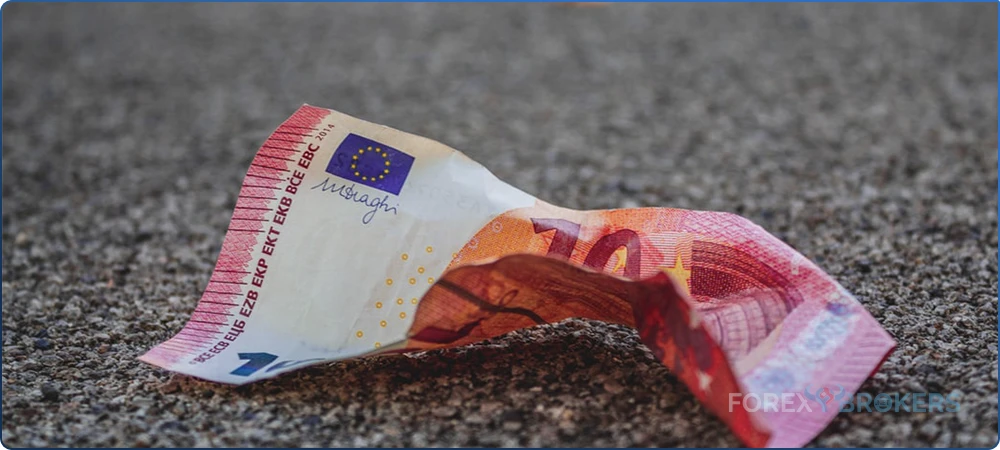
Euro Pairs Particularities
As mentioned earlier in this article, the Euro represents the basked of the previous national currencies exchanged at a specific rate. For this reason, many traders doubt the efficiency of technical analysis on various Euro pairs.
The argument goes that if the Euro was introduced only twenty years ago, how come brokerage houses show data for the EURUSD pair back to 1971? The explanation comes from the fact that the software uses the exchange rates set at the Euro’s introduction and projects backward what the value of the Euro would have been against other currencies, not part of the European project.
This is how it is possible to have data on EURUSD, EURJPY, or EURGBP from way earlier than when the Euro was introduced. Is this still valid from a technical perspective? The answer is a resounding yes.
Each Euro pair has its own particularities. Some of them have higher volatility levels than others, some require more margin than others, and the spread varies from currency pair to currency pair. What’s important to remember is that for several years now, the ECB keeps the main refinancing rate below zero, making it very expensive to be on the long side when trading the Euro unless all trades are closed at the end of the trading day. But for investors and swing traders, holding long positions on the Euro pairs is difficult as there’s a high cost associated with negative swaps.
EURUSD
Particularities:
- The most popular currency pairs among retail traders and professionals alike.
- Very liquid.
- Suitable for all technical trading strategies and styles.
- Has very tight spreads, and depending on the trading account, they don’t vary much during economic releases.
- Reflects the differences between the monetary policies in the Eurozone and the United States – for instance, as the Fed hiked the federal funds rate from zero to over two percent, the ECB kept the main refi rate in negative territory and even eased some more; as a result, the EURUSD pair dropped from above 1.25 to below 1.10 in less than a couple of years.
- A leading currency pair for the Forex dashboard, its volatility influences the entire market – when the EURUSD pair moves, the entire currency market moves, creating plenty of opportunities for speculation.
- Expensive to stay long for an extended period when the interest rate differential favors the USD (i.e., the monetary policy in the Eurozone is much more relaxed than the one in the United States).
EURGBP
Particularities:
- Now that the United Kingdom has voted to leave the European Union, the EURGBP has experienced higher volatility in the last three years since the referendum vote took place.
- A currency pair that requires more margin than the EURUSD.
- The value of a pip on the EURGBP pair is significantly higher than on the EURUSD pair because EURGBP trades below parity (i.e., the level where the two currencies are equal).
- Liquid pair, but brokerage houses have wider spreads compared to the EURUSD.
- It reacts more to the UK economic data than to the Eurozone data because the GBP is a more volatile currency.
EURCAD
Particularities:
- Pays negative swap on the long side as the Bank of Canada has a tighter monetary policy than the ECB.
- Reacts to changes in the price of oil as the Canadian economy is energy-driven, having the GDP dependent on the price of oil.
- Subject to slippage when trading large volumes, especially during the lighter trading times (e.g., after the New York session closes and before the Asian one begins).
- Wider spreads when compared with the Euro pairs mentioned so far.
- Follows closely the EURAUD evolution due to the high correlation degree between the two commodity currencies, AUD and CAD.
EURAUD
Particularities:
- Expensive to keep a long position overnight due to the negative swap.
- Reacts to changes in the price of gold as the AUD correlates with it.
- Has high volatility levels during the Asian session when liquidity is low, and the Reserve Bank of Australia makes changes in the monetary policy.
- Wide and unstable spreads on most brokers.
- The value of a pip is much lower than when trading the EURUSD pair or EURGBP due to the very weak AUDUSD ratio (currently trading well below the 0.7 level.
EURCHF
Particularities:
- It made history in 2015 when the SNB was forced to drop the fixed exchange rate of 1.20.
- Ever since is subject to massive interventions from the Swiss National Bank.
- Crucial for Switzerland as it expresses the rate with its most valuable trading partner, the Eurozone.
- Very low volatility, not suitable for swing trading or investing.
- Trading strategies on very low timeframes work well (e.g., trading divergences on the one-minute or the five-minute charts).
- Reflects the “battle” between the SNB and ECB – one of the reasons why the SNB dropped the 1.20 floor on the EURCHF pair was that the ECB prepared to cut rates, and the SNB couldn’t afford the effects of such a move; nowadays both central banks have their rates well below zero, with the SNB at a record low of -0.75%.
EURJPY
- Volatile pair.
- One of the retail traders’ favorite due to its high liquidity and relatively tight spreads.
- Correlated to the equity markets and especially to the USDJPY pair.
Tips and Tricks When Trading the Euro
The Euro is a unique currency part of the Forex dashboard. Few traders know that when interpreting the Dollar Index, almost sixty percent of the index is made of Euro. Hence, understanding how the EURUSD pair moves and trades and having a proper analysis of the pair helps explain the Dollar Index, a benchmark for most of the investment world.
For this reason, when trading the Euro, focus on the EURUSD pair. It rarely moves at the start of the trading week, tending to squeeze traders during the last trading days of the week (Thursday and Friday).
Pay attention to fixing times during the day, week, month, and even year. The flows pouring into and out of the EURUSD pair are significant in volume and influence the currency market’s volatility.
Make sure to check the options market for large expirations during the trading week. Typically, Thursday’s primary fix is subject to such expirations, and when there’s significant volume, the spillover into the FX market raises the volatility.
Moreover, keep an eye on the ECB members’ speeches. Often, the ECB members, including the President, hold relevant speeches between two monetary policy meetings to remind market participants what the correct monetary policy is.
Furthermore, the ECB and other central banks won’t ever admit they target exchange rates. This agreement was made at a G20 meeting, and they never commented on exchange rates. So far, the ECB held the promise, but it is known that the exchange rate is part of the monetary policy transmission.
Conclusion
Historically, no monetary union survived the test of time. With the Euro in its twenties now and already passing through an existential crisis, only time will tell if the monetary union was a good idea.
Looking back at European history, the current times are the most peaceful. No wars, no conflicts, and more European integration than ever.
For the first time, Europe stands together in negotiating its economic positions with the world. No longer monopolies can exist in Europe as the strong antitrust regulations are meant to protect European Union citizens.
Speaking of the European Union, it won’t exist without the Euro. While not all member countries adopted the Euro, it is the pillar the European Union is built on.
For the trading professional and not only, the Euro is a currency rivaling in importance the USD. The USD may very well be the world’s reserve currency, but the second choice for sovereign nations building foreign exchange reserves is the Euro.
Time will tell if the Euro and the European project will survive. Until then, it is a symbol of stability and prosperity in one of the most prosperous parts of the world.


